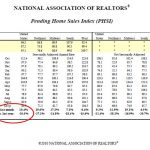Simply verifying online for today’s posted rate, might not lead to your anticipated final result due to the numerous aspects that may cause each person’s rate and closing cost scenario to change.
Since mortgage rates can change several times a day, the following questions may help determine whether or not your Loan Officer truly knows what to look for so that they are able to provide you with the best rate once you’re in a position of locking in your loan:

Who determines mortgage rates, and what exactly are they tied to?
Mortgage interest rates are driven by the pricing of Mortgage Backed Securities or Mortgage Bonds. The advertising often implies mortgage rates are based off the 10-year Treasury Note, which is incorrect.
While the 10-year Treasury Note have been known to trend in the same direction as Mortgage Bonds, it is not unusual to see them move in entirely opposite directions.
How often do mortgage rates alter?
Mortgage rates may change throughout the day, on the other hand they only change on days when the Bond markets are exchanging securities since mortgage rates are based on Mortgage Bond prices.
Think of a mortgage bond’s sales price similar to that of a Stock that trades up and down during the course of a day.
For example – let’s presume the FNMA 30-Year 4. 50% coupon is selling for $100. 50. The price is 50 basis points lower from the previous day’s closing price of $101.00.
In simple terms, the borrower could have to pay for an additional. 50% of their loan amount to possess the same rate today that they could have locked in the earlier day.
What can cause mortgage rates to change?
Mortgage bonds are largely affected by various market forces that influence the changing desire for bonds within the market. A few of the key economic factors that have the greatest impact are unemployment percentages, inflationary fears, economic strength and the overall movement of money in and out of the markets.
Like stocks, most fluctuation is caused by buyer and investor emotions.
What do you use to keep track of mortgage rates?
There are various great subscription based services available to monitor Mortgage Bond pricing.
The important thing is to make certain the loan officer is aware they should be monitoring Mortgage Bond pricing, for example the Fannie Mae 30-Year 4. 50% coupon… and not the 10-Year Treasury Note or the news media.
Once the Fed changes rates, why do mortgage rates move in the opposite direction?
It is a common misconception that after the Federal Reserve utilizes a rate cut it is immediately correlated to a reduction in mortgage rates.
The Federal Reserve policy influences short term rates known as the Fed Funds Rate (“FFR”). Lowering the FFR helps to stimulate the economy and increasing the FFR helps to slow the economy down. Effectively, cutting interest rates (FFR specifically) can cause the stock market to rally, driving money out of bonds and creating potential for inflation.
Mortgage bond holders have to obtain a higher rate of return on their money if inflation is growing, thus driving up mortgage rates. With the Federal Reserve Board meeting every six weeks, this is a crucial question to ask. If your Loan Officer doesn’t have a firm understanding of this relationship, they may leave your rate unprotected charging you thousands of dollars above the life of your mortgage.
Do different programs have different interest rates?
Traditional, FHA and VA loans can all carry different rates on a 30-Year fixed mortgage. FHA and VA loans are covered by the Federal Government in the event of defaults. Conventional mortgages are insured by private mortgage insurance companies, if insurance is needed.
Typically, FHA and VA loans carry a cheaper rate because the investor views the government backing as less of a risk. While rates are usually different for each program, it might be more essential to evaluate the monthly and general cost during the life of the loan to find out which program best suits your needs.
Why is an Adjustable Rate Mortgage (ARM) rate lower than a fixed rate mortgage?
An Adjustable Rate Mortgage (ARM) is usually fixed for a particular period of time. The period is typically 3 years, 5 years or 7 years. The shorter time period the rate is fixed, the lower the interest rate tends to be initially.
This is due to the customer getting the future risk of increasing interest rates. The only instance where this wouldn’t be true is when there’s an inverted yield curve where short-term rates are greater than long-term rates.
Why are rates greater for different property residence types?
Mortgage interest rates are based on risk-based pricing. Risk-based pricing permits adjustments to par pricing for risk factors such as; FICO scores, Loan-to-Value percentages, property type (SFR, Condo, 2-4 Units), occupancy (Primary, Vacation or Investment) and mortgage type (Interest Only, Adjustable Rate etc).
This allows the investors who lend their money for mortgages to receive additional compensation for taking additional risk.
Understand this: if the borrower encounters a financial difficulty, are they more likely to make the payment on home they live in or the one they rent? The answer in almost all the cases would be – the home they live in. That’s why the rates on primary residences are lower than other types of occupancy.
Amazon.com Best-selling author, Shashank Shekhar (NMLS 8176) is a mortgage lender with Arcus Lending, offering loans for home purchase and refinance. Shashank has been featured as a mortgage expert on Yahoo! News, ABC, CBS, NBC and FOX. He has been named "Top 40 under 40" most influential mortgage professionals in the country.

















